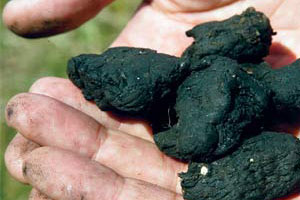
In March, Michelle Obama delighted locavores when she planted an “organic” vegetable garden on the White House’s South Lawn. For years, Alice Waters, Michael Pollan, and other sustainable food activists had been pushing the idea as a way to reseed interest in do-it-yourself agriculture. Less than two months later, the National Park Service disclosed that the garden’s soil was contaminated with toxic lead, and the plot’s educational value took on a new flavor as the New York Times and other papers discussed how to make urban backyards that are laced with old lead-based paint safe for growing kale and cauliflower. But those stories might have fingered the wrong culprit.
Starting in the late 1980s and continuing for at least a decade, the South Lawn was fertilized by ComPRO, a compost made from a nearby wastewater plant’s solid effluent, a.ka. sewage sludge. Sludge is controversial because it can contain traces of almost anything that gets poured down the drain, from Prozac flushed down toilets to lead hosed off factory floors. Spreading sludge at the White House was a way for the EPA to reassure the public that using it as a fertilizer for crops and yards (instead of dumping it in the ocean, as had been common practice) would be safe. “The Clintons are walking around on poo,” the EPA’s sludge chief quipped in 1998, “but it’s very clean poo.”
Perhaps not as clean as we thought. The same ComPRO fertilizer, now renamed Orgro, was used in a controversial, 2005 lead abatement study conducted in a predominately African-American neighborhood in Baltimore. Scientists wanted to know if lead in the soil of inner-city backyards could be immobilized by mixing it with sludge. Though the study found “significant reductions in the lead level in the treated yards,” the initial levels of lead in the soil had been astronomical. Even before being applied to the yards, the sludge was already contaminated with lead at up to 237 parts per million, which is about 23 times normal soil levels.
Given that the White House vegetable garden isn’t close to buildings that would shed lead-based paint, a combination of sludge and old exhaust particles from lead-based gasoline is more likely to blame for its lead problem. Sludge can legally contain up to 300 parts per million of lead, which is well above the 93 parts per million found in the White House garden. The EPA says that soil with more than 56 parts per million of lead might not provide “adequate protection of terrestrial ecosystems,” but doesn’t suggest worrying about anything below 400 parts per million as a threat to human health. However, some soil scientists advise against feeding children produce grown on soil with more than 100 ppm of lead. That’s cutting it pretty close for Obama’s daughters. The Clintons’ “very clean poo” might have been too good to be true.
UPDATE: The blog Obama Foodorama interviewed lead experts who pointed out that 93 ppm is not an unusual level of lead in urban soils. That level is still well above natural levels and the EPA’s own 56 ppm “ecological soil screening level”—hence my reasonable assertion that the garden is “contaminated with lead”–but the contamination could also be the product of old exhaust from lead-based fuel. Of course, it won’t be possible to know the background lead level on the South Lawn unless someone sampled it before sludge was applied (a White House spokesman did not return a phone call). Given that lead levels in sludge can legally be way higher than what was found on the Obama garden, I still believe sludge could be a factor in the 93 ppm, but how much of a factor will be hard to say.
Update #2: Thoughts on the odd media coverage of this issue, and the health concerns associated with sludge.
Update #3: Response to the New York Times.
(Updated 6/24/09 6:05 pm pacific)















